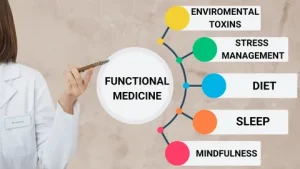
The Root Cause Revolution: How Functional Medicine Rewrites the Story of Autoimmune Disease
For decades, millions of people have lived under the weight of autoimmune diseases—conditions where the body turns against itself.

Neurologists, surgeons, and pharmaceutical companies have long dominated the conversation about brain injury recovery. Standard treatments often involve medication regimens, invasive procedures, and a cautious prognosis that leaves many patients feeling hopeless about their future. Yet, a growing movement led by chiropractic physicians is challenging this paradigm. Among these pioneers is Dr. John W. Jung, whose work “Alternative Treatments to TBI” is reshaping how we understand and approach the healing of the injured brain.
Chiropractic care, traditionally associated with spinal adjustments and musculoskeletal health, has far-reaching implications for neurological recovery. At its core, chiropractic medicine is based on the principle that the alignment of the spine plays a critical role in the function of the nervous system. When vertebrae are misaligned, they can interfere with the flow of nerve signals between the brain and the body. For individuals recovering from a traumatic brain injury, such disruptions can exacerbate cognitive deficits, mood disorders, and physical coordination issues.
Dr. Jung argues that restoring proper spinal alignment can significantly enhance the brain’s capacity to heal itself. His approach to chiropractic care extends beyond conventional adjustments and delves into the neurobiological impact of spinal health on brain function. The spine, after all, is not just a structural support; it is the highway through which neural impulses travel. When this highway is compromised, so too is the communication between the body and the brain.
By correcting spinal misalignments, particularly in the cervical region, chiropractic adjustments can reduce inflammation, improve circulation, and restore efficient neural signaling. This, in turn, creates an environment in which the brain can begin to repair damaged connections and regain lost capabilities. Patients who undergo chiropractic treatment as part of their TBI recovery plan often report improvements in focus, balance, coordination, and even emotional regulation symptoms that are notoriously difficult to treat through medication alone.
Dr. Jung’s work also emphasizes the importance of movement and balance in brain rehabilitation. Integrating vestibular exercises such as spinning, eye tracking, and limb motion into chiropractic sessions enhances the brain’s responsiveness to adjustments. These exercises target the cerebellum, a brain region critical for motor control and cognitive processing. The results are measurable and impactful. In one case, a young adult who had suffered a sports-related concussion and was experiencing debilitating dizziness found significant relief after a month of targeted chiropractic sessions combined with balance exercises.
Despite such outcomes, chiropractic care remains an underutilized resource in the broader medical community. Much of this stems from outdated perceptions and a lack of awareness about the neurological benefits of spinal health. Yet, as more patients seek alternatives to drug-heavy treatment plans and demand holistic solutions, chiropractic is gaining ground as a credible, science-backed approach to brain injury recovery.
What sets Dr. Jung apart is not only his clinical expertise but also his commitment to educating patients and practitioners alike. He does not position chiropractic care as a miracle cure, but rather as a foundational component of a multi-faceted recovery strategy. In his view, chiropractic care should work in concert with other disciplines nutritional therapy, cognitive training, sensory stimulation to create a comprehensive and personalized recovery plan.
The shift toward natural, non-invasive recovery methods reflects a broader cultural movement toward integrative medicine. Patients are no longer content to accept the limitations of traditional healthcare. They want options that align with their values, support their overall wellness, and offer tangible results. Chiropractic care meets these demands by addressing the root causes of neurological dysfunction rather than merely masking symptoms.
In a time when traumatic brain injuries are increasingly recognized for their long-term consequences and complexity, the insights offered by chiropractic medicine are not just relevant they are revolutionary. Dr. Jung’s work invites patients, caregivers, and healthcare professionals to reconsider what is possible when the body’s alignment is restored and the brain is given the opportunity to heal on its own terms.
Ultimately, the path to recovery is not a straight line. It is a journey marked by setbacks, discoveries, and moments of profound transformation. Chiropractic care provides a critical key in that journey one that opens the door to a future where recovery is not only possible, but probable. By embracing this approach, we are not only treating injuries; we are honoring the body’s inherent wisdom and its relentless drive toward healing.

For decades, millions of people have lived under the weight of autoimmune diseases—conditions where the body turns against itself.

The human brain is one of the most extraordinary organs in existence—capable of adapting, learning, and healing itself in ways that science is only beginning to understand.
Sign up for Dr. John W. Jung’s newsletter and receive exclusive content on brain injury recovery, alternative treatments, and cutting-edge research. By subscribing, you’ll get expert tips on improving brain health, updates on new therapies and research findings, special offers, upcoming events, and exclusive excerpts and bonus content from Dr. Jung’s work.
Don’t miss out—join our community today!